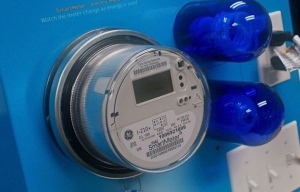Throughout many communities in the world, in countries like the United Kingdom, Canada and the U.S., smart meters are quickly replacing traditional household energy meters. The idea behind this shift is to give homeowners more control of just how they spend money on energy consumption. For example, in the old system a household was charged a per-month fee based on how much power that household consumed. Now, with smart meters, that fee is on a per-hour basis.

The theory behind this is that it gives consumers the option of saving cash by using less energy during peak hours. However, unless a household is prepared to shift the majority of their electrical usage on a regular basis, it can in fact be very difficult to actually save money. Sure, there is the option to forgo a smart meter in favor of working with an electrical provider, but their contracts can be restrictive.
The best way to truly save money with a smart meter is to adjust overall energy usage and improve the energy efficiency in the household. The ways to do this include:
Cutting back on air conditioning/heating
According to the Department of Energy, heating and cooling accounts for 54% of a typical household’s energy costs. This is simply untenable – especially when a smart meter is involved. To avoid the high costs that come with cooling a home during those oppressive summer months, it’s best to adopt new A/C habits. This means setting a regular thermostat temperature of 77°F/25°C and turning the unit off before leaving the home. It’s also helpful to use fans as an alternative as well as trying to avoid running the system during peak hours whenever possible.
As for heating, the best way to save cash is to lower the temperature of the water heater and lower the heating temperature during the night. One costly option that will save cash in the long term is to switch to a more energy-efficient heating system, such as an Energy Star-qualified boiler. The Energy Star rating is the federal standard for energy-efficient household appliances and systems.
Outfitting the kitchen with energy efficient appliances
Once again, residents are going to want to look for appliances – from blenders to dishwashers – that carry the Energy Star label. According to the Washington Post, many Energy Star-rated appliances use up to 54% less energy than their older counterparts, and using a newer Energy Star-qualified refrigerator instead of an older model can save homeowners $100 per month or more on their utility bills.
There are also other easy ways to cut energy costs in the kitchen. These include:
- Using pots and pans that fit the surface area of the burner. Using pans that are too small, for example, will waste heat.
- Avoid washing dishes in the sink whenever possible. Modern dishwashers are designed to conserve water, and many come with an “economy” setting on the unit.
- Operate the trash compactor at night.
Replace old light bulbs
Older incandescent light bulbs are some of the least energy efficient models around. CFLs (Compact Florescent Bulbs) use 75% less power than incandescent bulbs and often last 10 times longer.
By following the above tips and adopting a few new habits, those residing in homes with smart meters can curb costs without having to come up with comprehensive and restrictive new daily schedules for power usage.
Natasha Risinger blogs about energy. Her articles have appeared on eco blogs, personal finance blogs and more. Click the link for texas electricity www.texaselectricityproviders.com/
